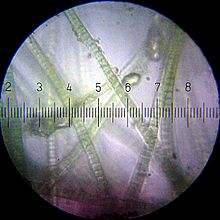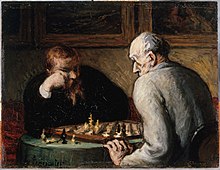Structural Biochemistry/Axonal Transport and Disease
Axonal Transport
[edit | edit source]
Axonal transport, also called axoplasmic transport, is a cell process not only responsible to the movement of protein and membrane to its axon, but also responsible to the movement of molecules that destined for degradation from the axon back to the cell body. Movement toward the cell body is called retrograde transport; movement toward the synapse is called anterograde transport.
Axonal transport is essential to neuron cell growth and survival. Axon of neuron is 1,000 or 10,000 times the length of the cell body, but contains no ribosomes, which means that it is unable to produce protein. All proteins and membrane must synthesize proteins in neuronal cell body or neuron cell dendrite, and then transport back to the axon. The motor protein kinesin is a motor protein used during anterograde processes while dynein is used in retrograde processes .
Vesicular cargoes move 50-400 mm/day whereas proteins move less than 8 mm/day.
Alzheimer’s Disease
[edit | edit source]Introduction of Alzheimer’s Disease
[edit | edit source]
Alzheimer's disease, also called AD, is a common form of dementia. The reason caused disease is unknown and there is no cure for disease. The patient will get worse as disease progresses, and eventually leads to death.5% 65-year-old people have Alzheimer's disease; 20% 85-year-old people have Alzheimer's disease- percentage of patients’ increases as patients’ age increases.
Type
[edit | edit source]There are 3 kinds of Alzheimer's disease:
1- Dementia AD, also called DAD, occupies 10% of patients. Most patients are younger than 65; some of them even younger than 40-year-old. Researchers find out that some patients have number 14-chromosome abnormalty, which doesn’t show on SDAT patients.
2- Senile dementia with Alzheimer's type, also called SDAT, occupies 85~90% of patients. Most patients are older than 60 years old. Research shows that SDAT is not hereditary.
3- Familial AD, also called FAD, occupies 1% of patients. FAD is considered as hereditary disease, which is based on euchromosome heredity rules of Mendel. In the family of FAD, at least two generation of family members are diagnose as FAD. Most patients are younger than 40-year-old. The disease is barely affected by drugs.
Diagnose
[edit | edit source]Level MMSE Explanation Time to next level Degradation degree
1 29~30 Normal - Adult
2 29 Normal adult aging dysmnesia. - Adult
3 25 Mild neural cognitive dysfunction Reducing working ability and social ability. - Younger adult
4 20 Pre-dementia Alzheimer's disease Reducing ability of calculation and complicated work, attention and dysmnesia. 2 years 8~ Teenagers
5 14 Early Alzheimer's disease Reducing calculation on 2~20, losing ability of normal activity. 1.5 years 5~7 years old
6 5 Moderate Alzheimer's disease Cannot account number from 10 to 1, need help from other people to finish normal activity. 2.5 years 5~7 years old
7 0 Advanced Alzheimer's disease Need help for living, totally depends on other people. 8~9 years 4~15 months
Characteristics
[edit | edit source]There are four stages of the disease:
1- Pre-dementia:

Patients will have mild cognitive difficulties. The test can help doctor to find Alzheimer's disease symbols existing eight years before diagnosis of AD. These symbols, such as short memory loss and inability to acquire new information, will cause patients cannot finish complex living activity independently.
2- Early:
Defined as first 2~3 years, patients will have difficulties with language, executive functions, perception, or execution of movements. Language problem shows obviously in decreased word fluency and shrinking vocabulary, eventually leads to general oral and written impoverishment in language. Memory losing happens as same time, but less prominent than other symbols. Alzheimer's disease doesn’t affect all memory, such as implicit memory, episodic memory and semantic memory.
3- Moderate:
Disease will eventually hinder independence; patients will lose common living abilities. On language perspective, patients are unable to recall the vocabulary, leading incorrect word substitution. Reading and writing skills are also reducing progressively. Memory problem get worse; some patients even cannot recognize close relatives. Emotion changes dramatically, leading to wandering, crying and resistance to caregiving.
4- Advanced:
This is the last stage of Alzheimer's disease. The MMSE will drop 3~4 points every year until it goes to zero. Normally, patients can still live for 8~9 years, but most patients are already lost the living ability - all of their living activities are relied on other people. Their vocabularies reduce to simple phrases; sometimes they can only speak single word. Patients will dead eventually, but the reason caused patients dead is not Alzheimer's disease - is actually some external factors, such as infection of pressure ulcers or pneumonia.
Causation
[edit | edit source]There are several reasons that may cause Alzheimer’s Disease:

1- Heredity
Research report shows that more than 20% 80-year-old people have Alzheimer’s Disease. However, in the Alzheimer’s Disease family, more percentage of patients is observed; the age of having Alzheimer’s Disease even reduces to 13-year-old.
2- Cyanobacteria
Cyanobacteria contain neurotoxin named BMAA(β-N-methylamino-L-alanine). BMAA was verified that is strongly poisonous to animal nerve cells, increasing the speed of deterioration of animal brain cells. Accumulation of small amounts of BMAA can kill all brain nerve cells of rat.
3- Aluminum
Over-absorbing Aluminum ions is considered as the reason that may cause Alzheimer’s Disease. The research report shows that after the World War II, soldiers left on the Territory of Guam had high percentage of Alzheimer’s Disease. The high concentration of Aluminum ions was detected in the underground water of the Territory of Guam. After changing the drinking water for soldiers, the percentage of having Alzheimer’s Disease drops dramatically.
Treating and Drugs
[edit | edit source]There are three drugs that used to treat Alzheimer’s Disease. The first two drugs are already approved by FDA and used in clinical. The third one is still in testing period.
1- Anti-acetylcholinesterase
Anti-acetylcholiesterase is used to treat patients who have early Alzheimer’s Disease. The drug changes patients’ emotion and psychotic symptoms. In order to treat accompany diseases, such as insomnia, doctors suggest that patients should take sleeping pills or other assistant pills with Anti-acetylcholiesterase at same time.

2- Memantine(Namenda)
By stopping excitotoxicity of Glutamic acid, Memantine can stop the destruction of brain cells caused by Glutamic acid, which reduces the speed of losing living ability. Memantine is the only drug that can treat moderate and advanced Alzheimer’s Disease.
3- bFGF
Research report shows that bFGF is useful to treat rats that have Alzheimer’s Disease, but there is no clinical report supporting that bFGF has positive effect on human body.
Prevention
[edit | edit source]There is no evidence to support that any particular behavior is effective to preventing Alzheimer’s Disease. However, researches show that changing a few modifiable factors, such as diet, intellectual activities, and living speed, can reduce the chance of getting Alzheimer’s Disease. On diet, people should eat more vegetable and decrease times of eating meat. And intellectual activities, such as reading, playing board games, completing crossword puzzles, and playing musical instruments, help to keep brain cells healthy.
Reference
[edit | edit source]1. Gorazd B. Stokin and Lawrence S.B. Goldstein, "Axonal Transport and Alzheimer’s Disease"
2.http://en.wikipedia.org/wiki/Alzheimer’s_Disease
3.http://zh.wikipedia.org/zh-cn/阿兹海默病
4.http://baike.baidu.com/view/1340086.htm
5. Wei Fan "Introduction of Alzheimer’s Disease"
6. Meiting Luo "Medicines and Treating Methods of Alzheimer’s Disease"
